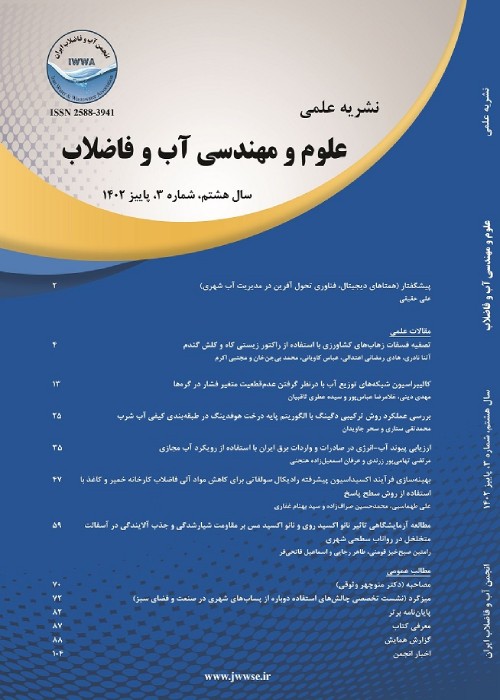Application of Denitrification Wall in Nitrate Removal from Groundwater Aquifers
Groundwater nitrate pollution is nowadays one of the most important environmental issues with significant effect on human and environment health. Due to the importance of this vital water source, methods have been developed for purifying the groundwater contaminated with nitrate. One of the effective and long-lasting purification methods for groundwater contaminated with agricultural drains is the in-situ method of denitrification wall. The general concept of this technology is placing a denitrification wall with carbon material across the nitrate-contaminated groundwater pathway so that it can block the nitrate pollution as nitrate masses pass through the wall due to the groundwater natural hydraulic gradient. Despite widespread acceptance, there are still many unresolved issues regarding the long-term performance of denitrification walls which requires more understanding on the behavior, principles of design and construction methods of such walls. Accordingly the aim of this study was to fully investigate the technology and implementation of denitrification walls in all aspects. The method of this study was library type and the content, explored in simple expressions in different sections, is based on a descriptive-analytical approach to experimental and scientific experiences of this method on contaminated sites. Results showed that denitrification wall can be drilled underground either in form of funnel and gate or continuous configuration and the choice depends on the hydrological characteristics of the site and the cost of materials used in the wall. Also, when water flow contaminated with nitrate passes through the denitrification wall, nitrate pollution is treated with either adsorption or biological removal mechanisms or a combination of them. The right application of the denitrification wall can be economically efficient and the success of the system depends on the use of appropriate tools and solutions for accurate formulation of the problem in the real aquifer environment with its large dimensions and complexity. In this regard, numerical modeling and laboratory studies can help to achieve a detailed understanding of the problem in a real environment.
- حق عضویت دریافتی صرف حمایت از نشریات عضو و نگهداری، تکمیل و توسعه مگیران میشود.
- پرداخت حق اشتراک و دانلود مقالات اجازه بازنشر آن در سایر رسانههای چاپی و دیجیتال را به کاربر نمیدهد.




